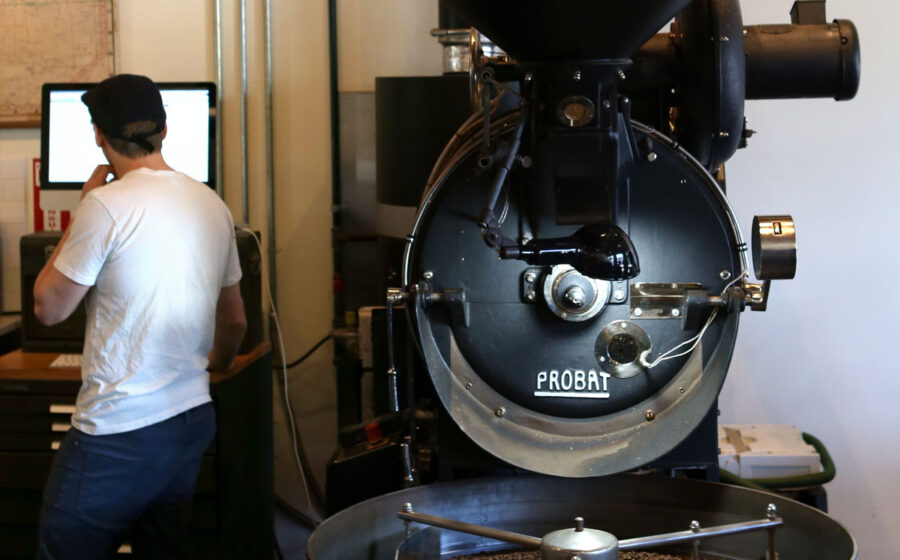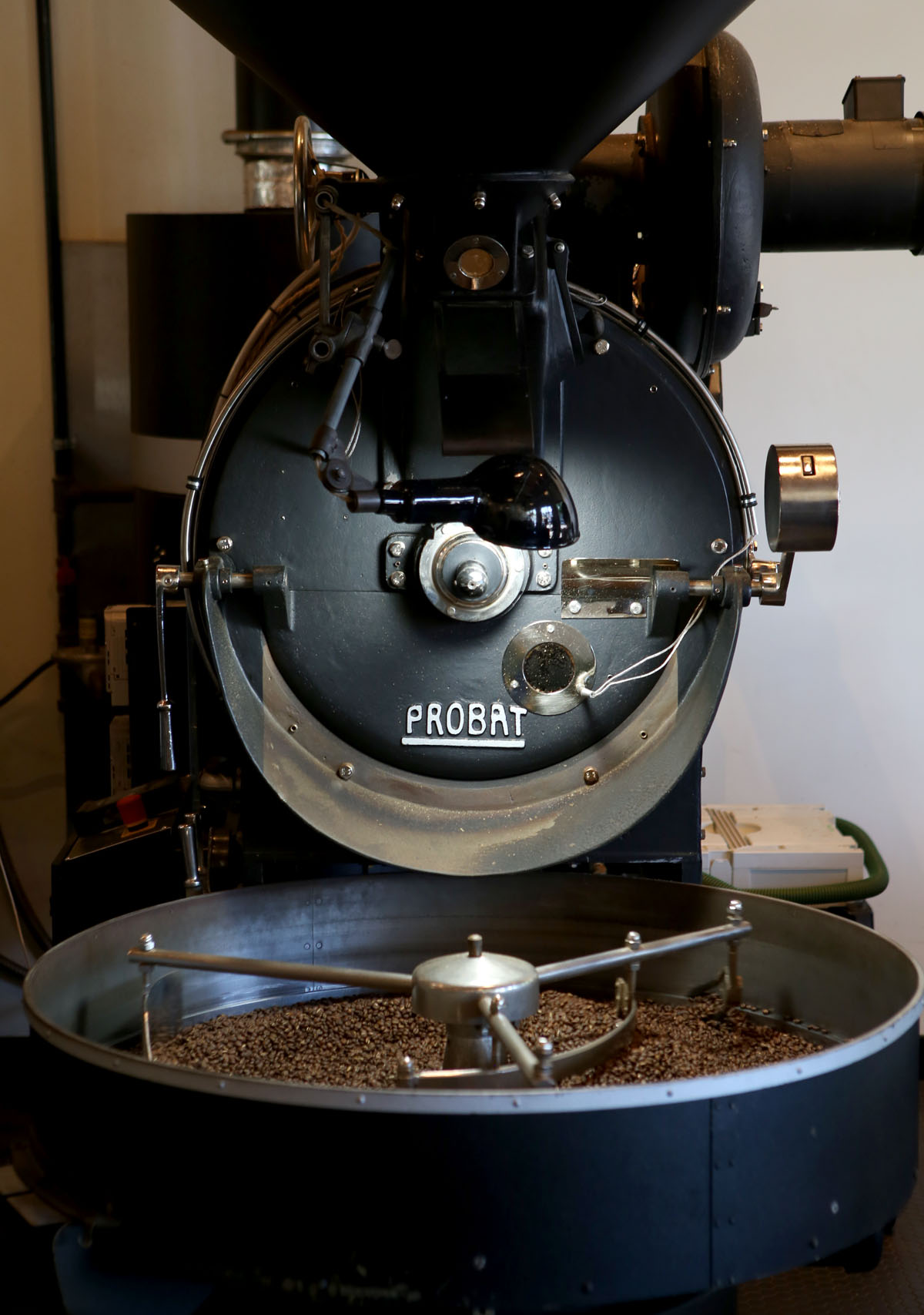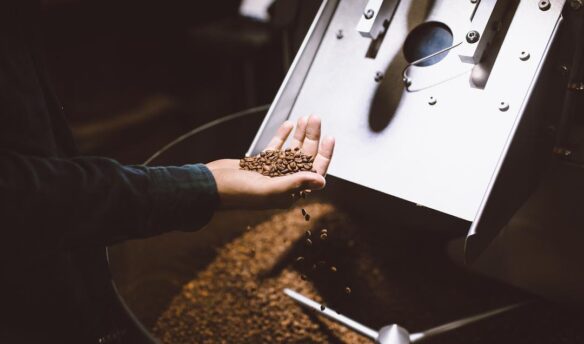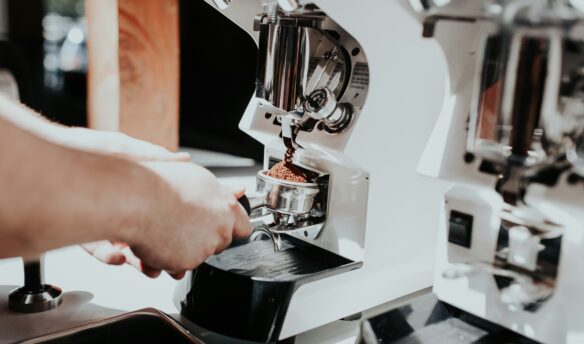[W]alk into many modern coffeehouses and roasting companies nowadays, and you’ll be faced with a smiling behemoth of a coffee roaster with a worn discharge handle and the words PROBAT written, san-serif, like a badge of glory across a worn faceplate. The cooling sweep is majestic, somehow, and years of stories are worn into the metal and cast iron. You might be looking at a Probat UG-series roaster. You might be looking at the prize jewel of that coffee roasting company. And you might be drooling.
“An old Probat, pre-1958? Now that’s something to get up and die for.”
Built until 1958, the Probat UG-series cast-iron roasters came in five, twelve, fifteen, twenty-two, thirty, and forty-five-kilo sizes, and finding one for yourself today might be harder than scoring an original Matamp guitar amplifier. Roasters the likes of Temple, Square Mile, Heart, and Caffe Vita create masterpieces every day on these old works of art. Jay Endres, director of Coffee Tec, puts it this way: “An old Probat, pre-1958? Now that’s something to get up and die for.”
What are the cherished characteristics of these incredible machines, and how can you find one? Once you find one, how do you approach the inevitable rebuild and long-term maintenance?
According to Endres, it’s pretty simple: 1958 was the last year Probat made roasters with a mainly cast iron body and its patented air flow system. Marty Curtis, founder and owner of Combustion Systems Sales & Service Inc, says the cast-iron parts consisted of front and back faceplates, drum spokes and exhaust blower housing, as well as a side plate on the cooling blower, with the rest sheet metal or iron. In 1958, the roasters changed to part steel and part cast iron. Dan Jolliff, President of US Roaster Corp, adds, “Dual fans were almost always in use on the UG-series, and there were multiple fire rate settings on their burners instead of just a thermostat control.” He adds with a touch of the nostalgia the UG-series tends to bring out, “All those old roasters might have had exposed gears, fifty pulleys, and be leaking grease, but they still roasted great coffee.” And that nostalgia is central to the mystique surrounding the UG series: there’s not much info or specs on the UGs to guide a new or aspiring owner. There’s certainly no guarantee of performance, so we all tend to apply our own unique yearning to its metallic hulk.
As for finding your own private hunk of Probat to gloat over, good luck! “Fifteen to twenty years ago they were just sitting around in barns,” says Jollif. “No one wanted them!” Now the mystique and artisan-centric nature of the roasters has propelled them to high demand. You can expect to pay well above the cost of a new cast iron roaster and then to put additional thousands into rebuilding and ongoing maintenance. Marty Curtis adds, “It can be hard to find parts for those old UGs. Certain parts, if you don’t know where to get them, you might never get it running again.”
“It can be hard to find parts for those old UGs. Certain parts, if you don’t know where to get them, you might never get it running again.”
Bring someone along who knows these old roasters, take a lot of pictures, and “don’t be afraid to kick the tires a bit,” says Jollif. Pull the drum out and check for a hole on the side of the interior drum, which is common for the UG series after years of use and will require repair. Look on the outside for burn marks to indicate past roaster fires, listen to the bearings, and send photos of everything to a knowledgeable tech if you can’t bring one with you.
Endres finds that many roasters who are in the market for a Probat UG are really more into the ego boost that possession offers, and counsels that ownership of one of these industrial masterpieces is really for those who are seduced by the roasters, fascinated by the history of it, and not out to best the Joneses down the street. Living with these roasters requires fortitude, mechanical aptitude (or good friends who have it), and a strong maintenance budget. The roasters can be loud enough to inhibit shop operations, and might take six to eight months to rebuild. Roasting on these babies will require a much stronger learning curve. On the financial side, though, Curtis adds that resale values for these roasters hold much better than new roasters, so if you’re prepared to follow the thing through it can be a great investment for your business.
The truth is that the Probat UG series, like a ’65 Corvette, is a project to be undertaken with love, plenty of cash, and a long-term mindset. Done well, the roaster will reward you with moderate fame, tank-like longevity, and presence not unlike that ground-shaking Matamp.
—Emily McIntyre is a freelance writer based in Portland.

















